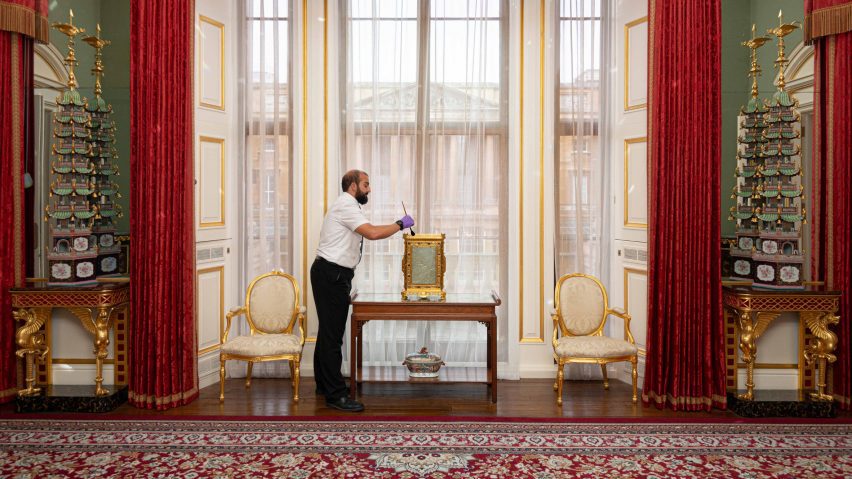
Buckingham Palace's chinoiserie interiors revealed following five-year renovation
Porcelain lions, nine-tiered pagodas and a lotus-shaped chandelier feature in Buckingham Palace's newly refurbished east wing, which has opened to the public for the first time in its 175-year history.
The east wing at London's Buckingham Palace, which opened this month, houses a series of decadent interconnected rooms including the centre room, which leads to the palace's famed balcony overlooking the Mall.
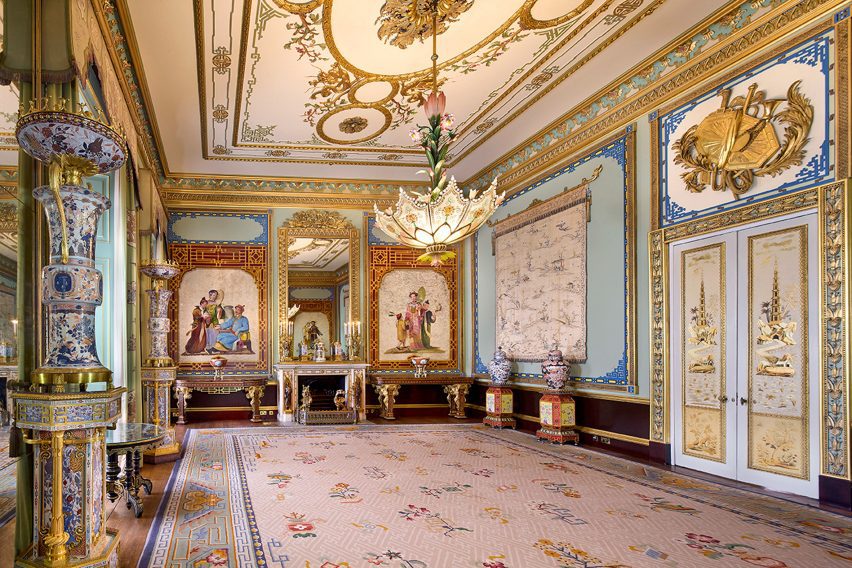
Originally built by Edward Blore between 1847 and 1849 to "provide space for Queen Victoria's growing family", the wing encloses what was previously a U-shaped courtyard, according to the Royal Collection Trust.
After five years of restoration work by the trust's curators and conservators, involving the temporary removal of over 3,500 artworks and other objects, the wing has opened to the public as part of the palace's State Rooms tours that take place every summer.
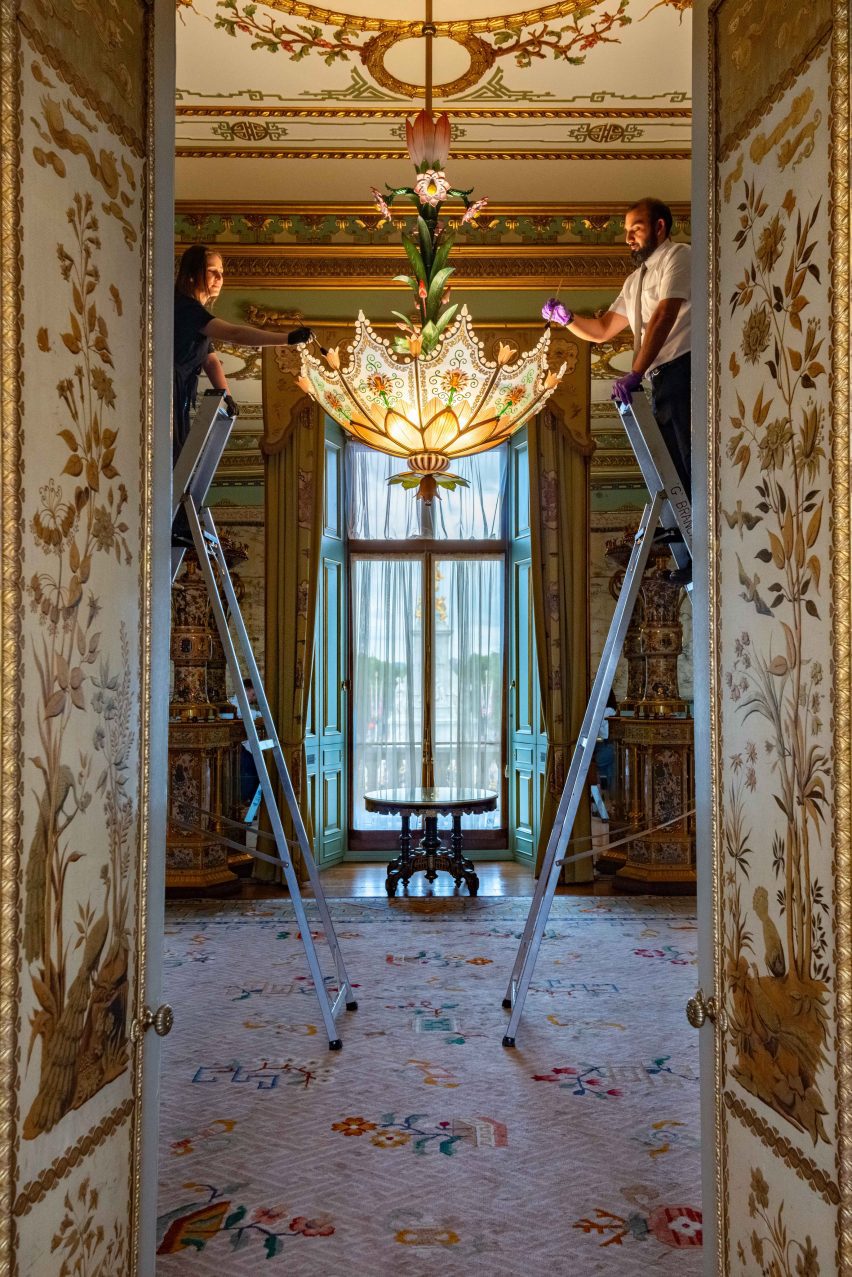
It reveals an interior filled with King George IV's 18th-century chinoiserie designs, which were transferred to Buckingham Palace after the 1850 sale of his seaside retreat – Brighton's Royal Pavilion. Prince Albert oversaw the original decoration.
The centre room features an oversized lotus-shaped chandelier finished in glass and lacquer, illuminating a large carpet with geometric floral patterns. Visitors can also find a pair of 18th-century Chinese imperial silk wall hangings.
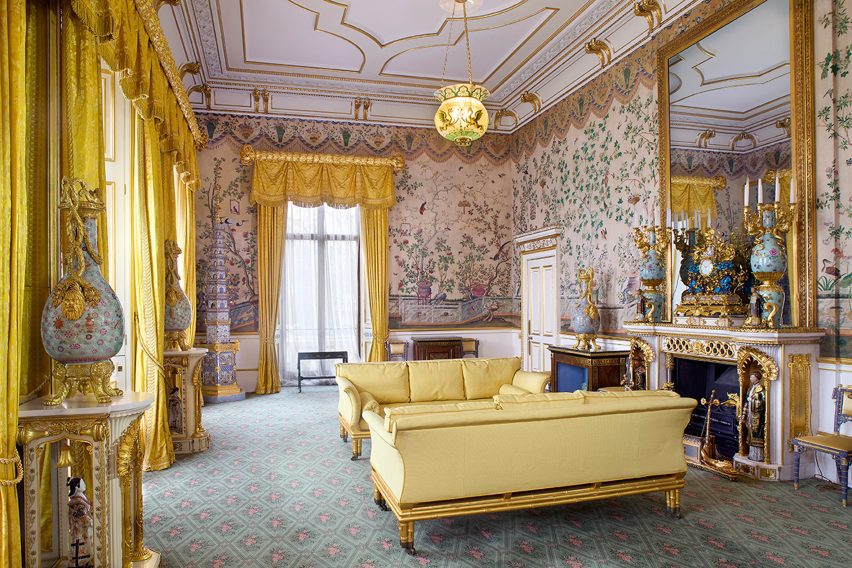
A duo of Chinese pagodas with nine ornate tiers characterise the yellow drawing room, named for its sunny drapes and sofas, which includes hand-painted wallpaper that was "painstakingly" cleaned and conserved by the team.
A "kylin clock" – complete with turquoise porcelain lions and a tiny Japanese hotei, or god of luck – also sits on the room's gold-trimmed mantlepiece.
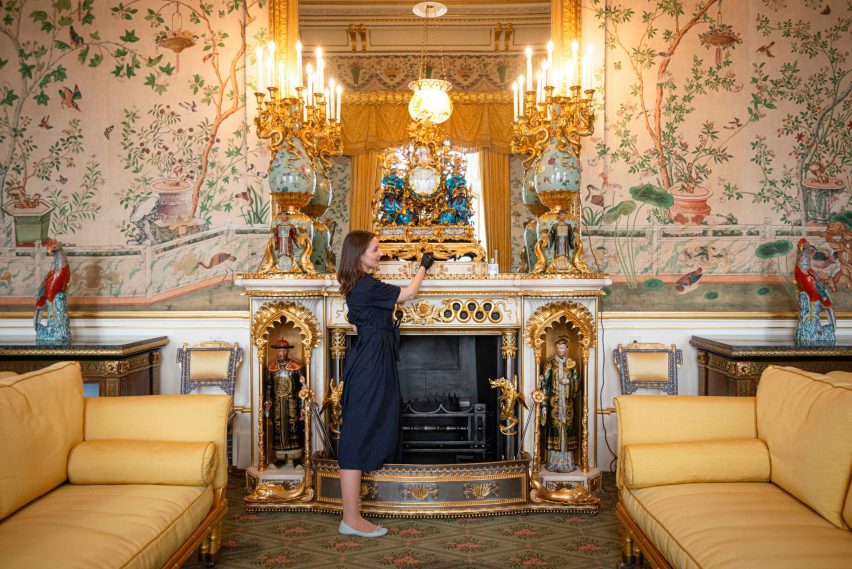
Elsewhere in the wing, the 240-foot principal corridor spans the entire length of the palace and has a bright red carpet. Ebonised cabinets feature Japanese panels, which contrast with the various royal paintings by historical European artists such as Thomas Gainsborough and Franz Xaver Winterhalter.
Striking motifs including dragons and gilded curtain poles can be found throughout the wing.
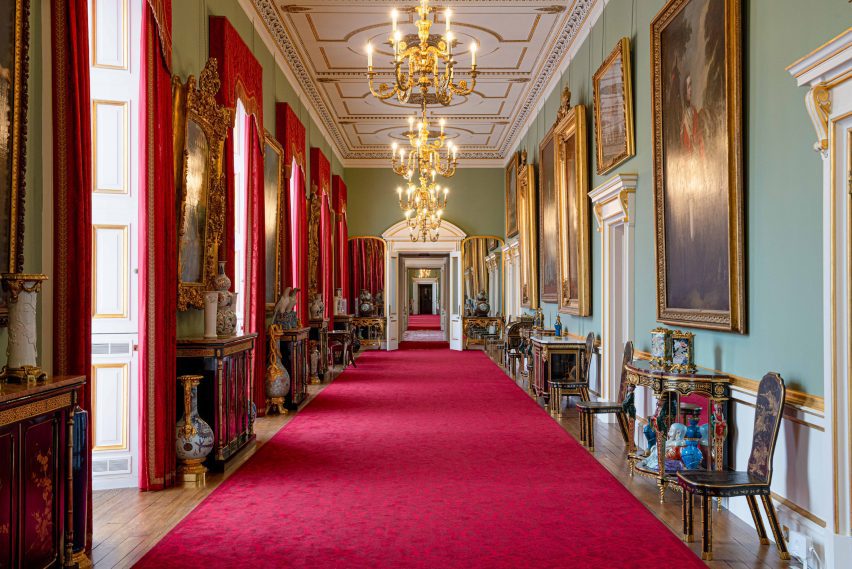
"The pavilion's contents – which reflected King George IV's love of Asian art and design – were transferred to the east wing, inspiring the Chinese-themed decor of its principal rooms," said the Royal Collection Trust.
Visitors to the palace's state rooms can also see the recently unveiled portrait of King Charles III, painted by Jonathan Yeo in bright red hues, housed in the ballroom.
The refurbishment is part of a longer 10-year reservicing programme at the palace, which includes improvements to the palace's electrical cabling, plumbing and heating systems that have not been updated since the 1950s, according to the Royal Collection Trust.
Architect Thomas Heatherwick designed a sculpture containing 350 trees and erected it outside Buckingham Palace to mark the late Queen Elizabeth II's platinum jubilee in 2022.
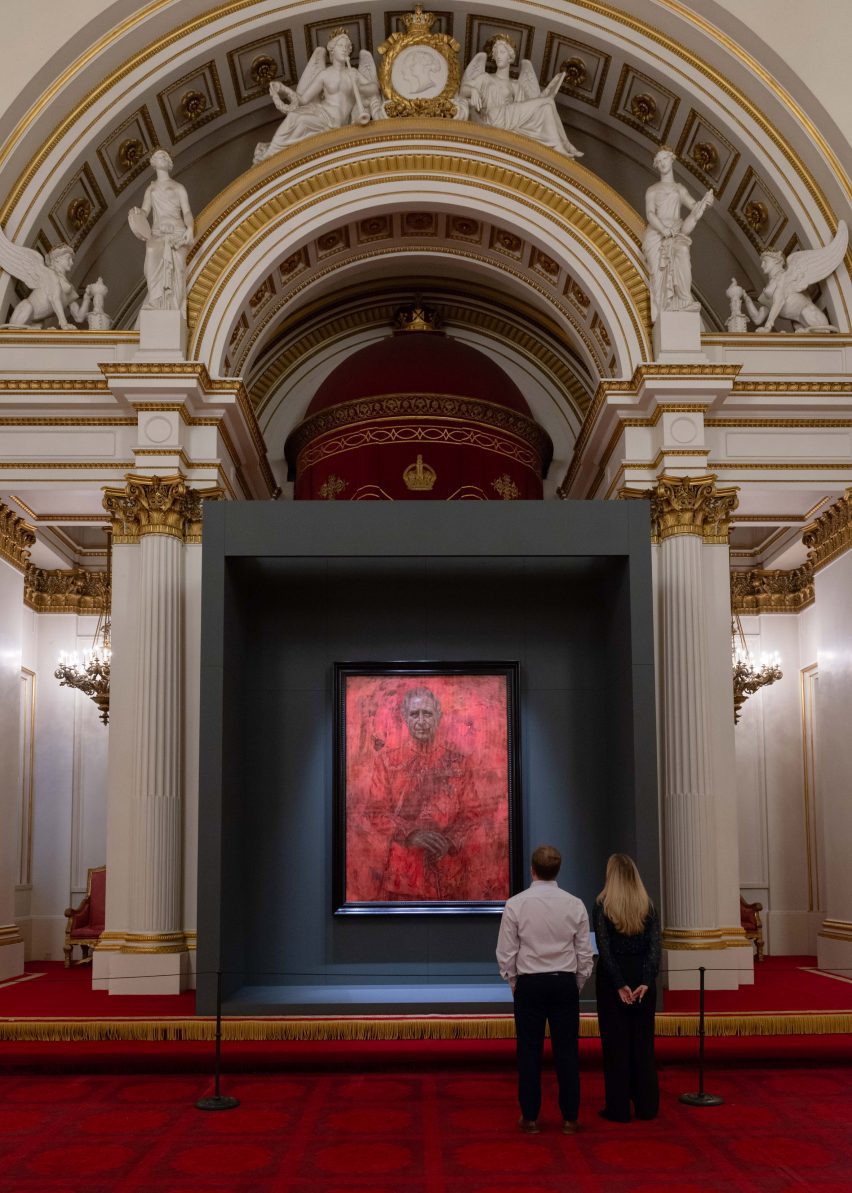
After her death, writer Stefan Simanowitz and architect Antonio Pisanò also proposed a memorial garden that would have seen part of the palace's gardens converted into a "natural sanctuary" for the public.
The photography is by Peter Smith.